 in this first part of the IceCube portrait we show the R&D developments of a scintillator array for IceCube-Gen2.
in this first part of the IceCube portrait we show the R&D developments of a scintillator array for IceCube-Gen2.
R&D at KIT and DESY for IceScint
An array of scintillation detectors can be used to increase the veto capabilities for cosmogenic neutrinos and enables an improvement in the reconstruction of cosmic-ray induced air-showers. The Institut für Kernphysik at KIT and the astroparticle group at DESY decided to build such a scintillator array combining the existing TAXI DAQ, developed by DESY, with newly developed scintillation detectors based on the knowledge gained at KIT by building also the upgrade of the Pierre Auger Observatory, AugerPrime.
The IceScint detector is made of Fermilab scintillator bars and wavelength shifting fibres readout by state-of-art silicon photomultipliers (SiPMs).
With the single photon calibration stand at KIT (SPOCK) the most suitable SiPM for scintillator readout was specified and before installation, the SiPM characteristics of each installed SiPM were measured. The 6x6mm² Hamamatsu S13360-6025PE was found to be best suited for the specific requirements. Below the Photon Detection Efficiency and the Gain as a function of the overvoltage for one of the installed SiPMs are shown:
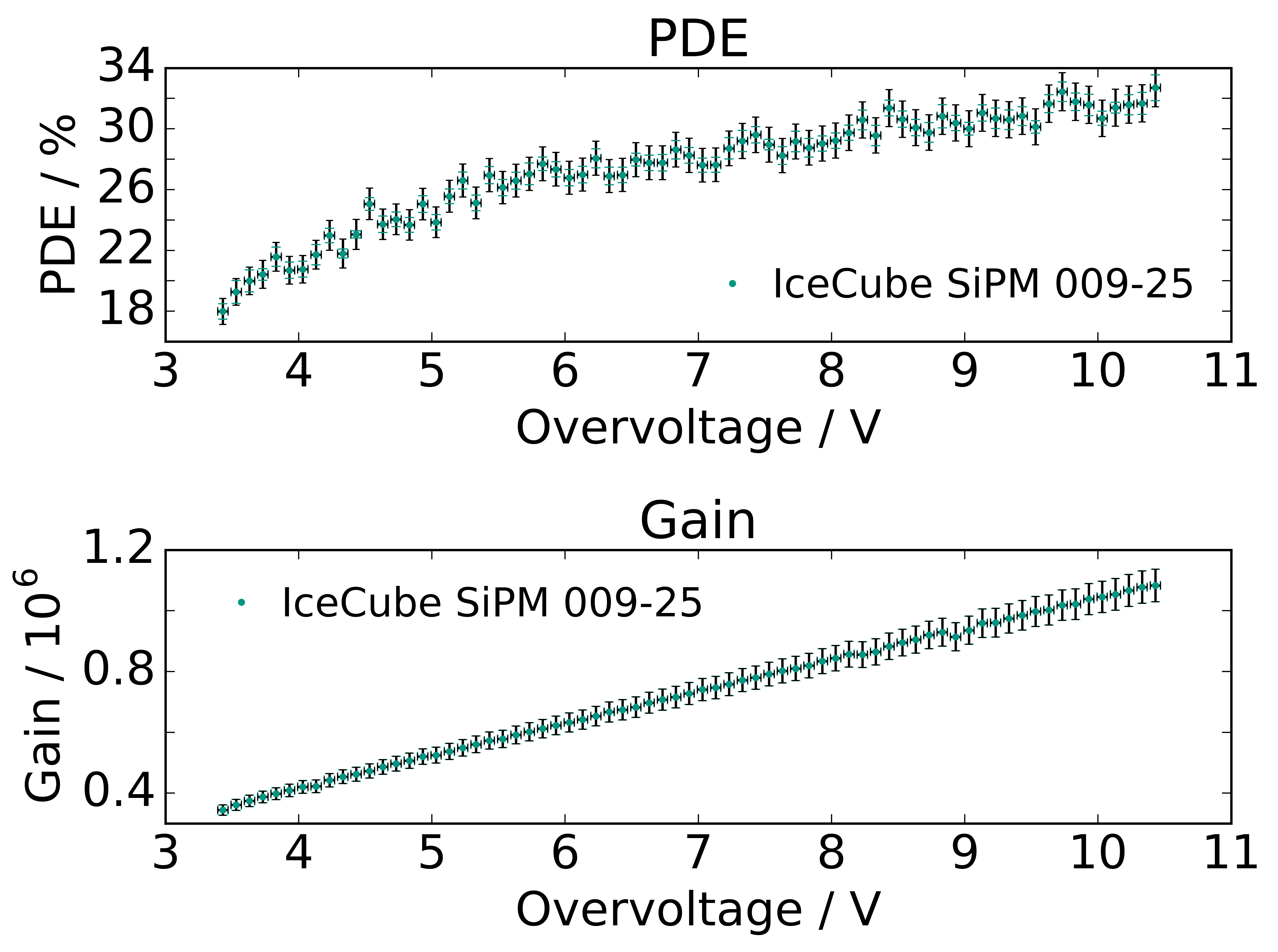
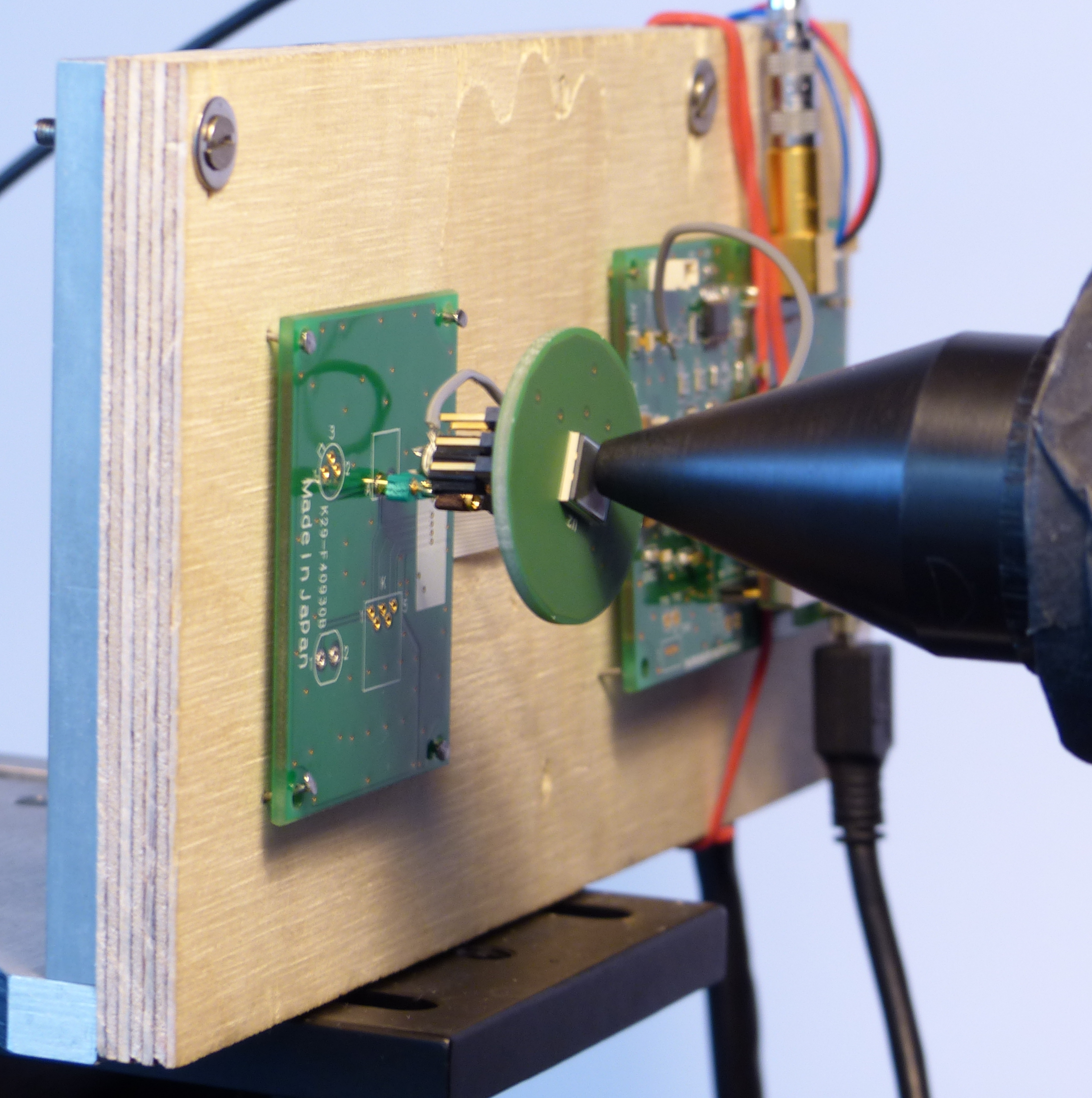
(from M. Oehler)
(Credit: M. Oehler)
For a first prototype detector several parts of the detector had to be developed, measured and tested for functionality in environmental conditions like at the South Pole. As example, a new analog readout module, consisting of three printed circuit boards, a new optical coupling and a modified routing of the optical fibers was developed. The performance of all prototype detectors was measured with an established calibration setup, the muon tower at KIT.
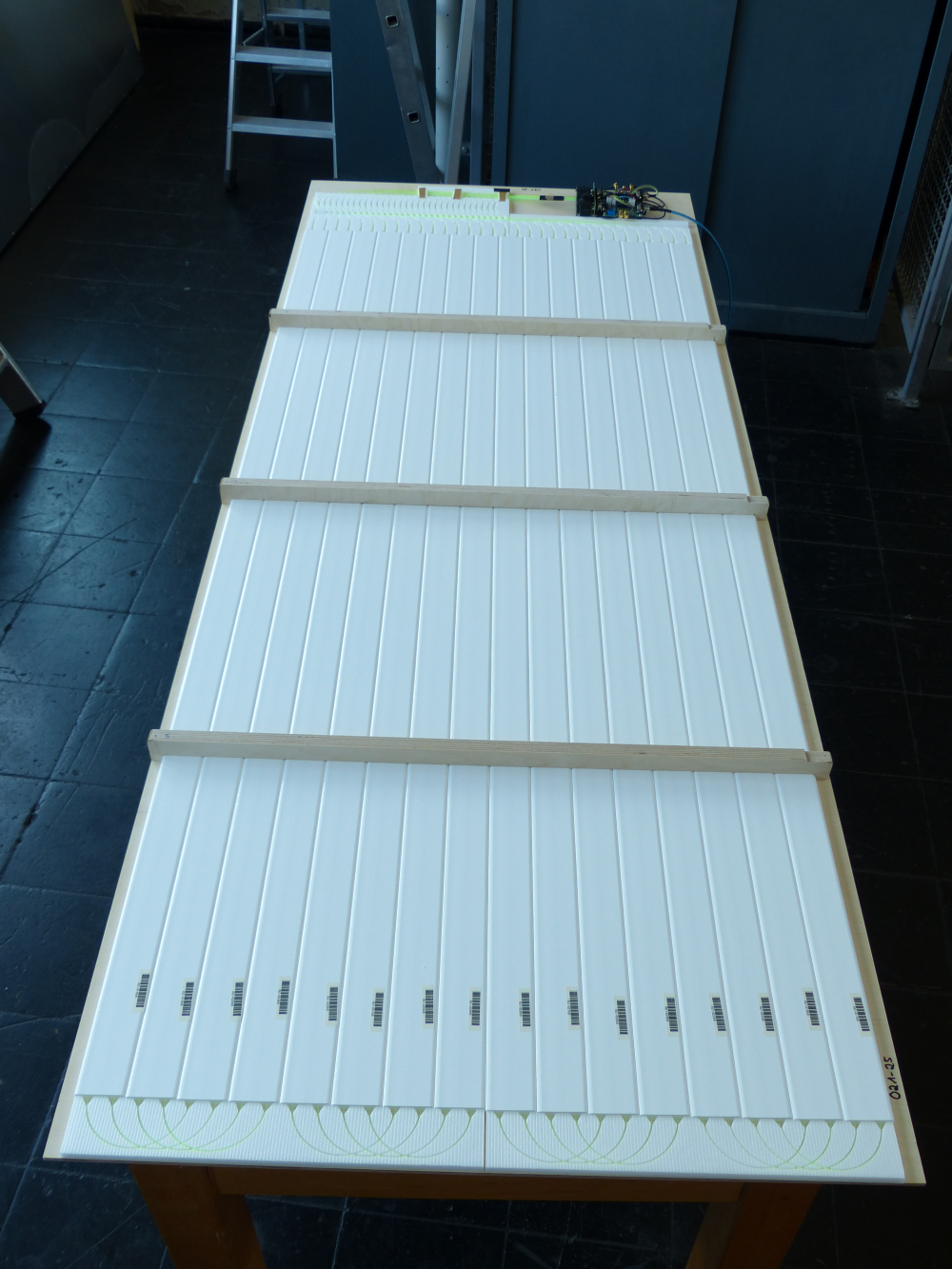
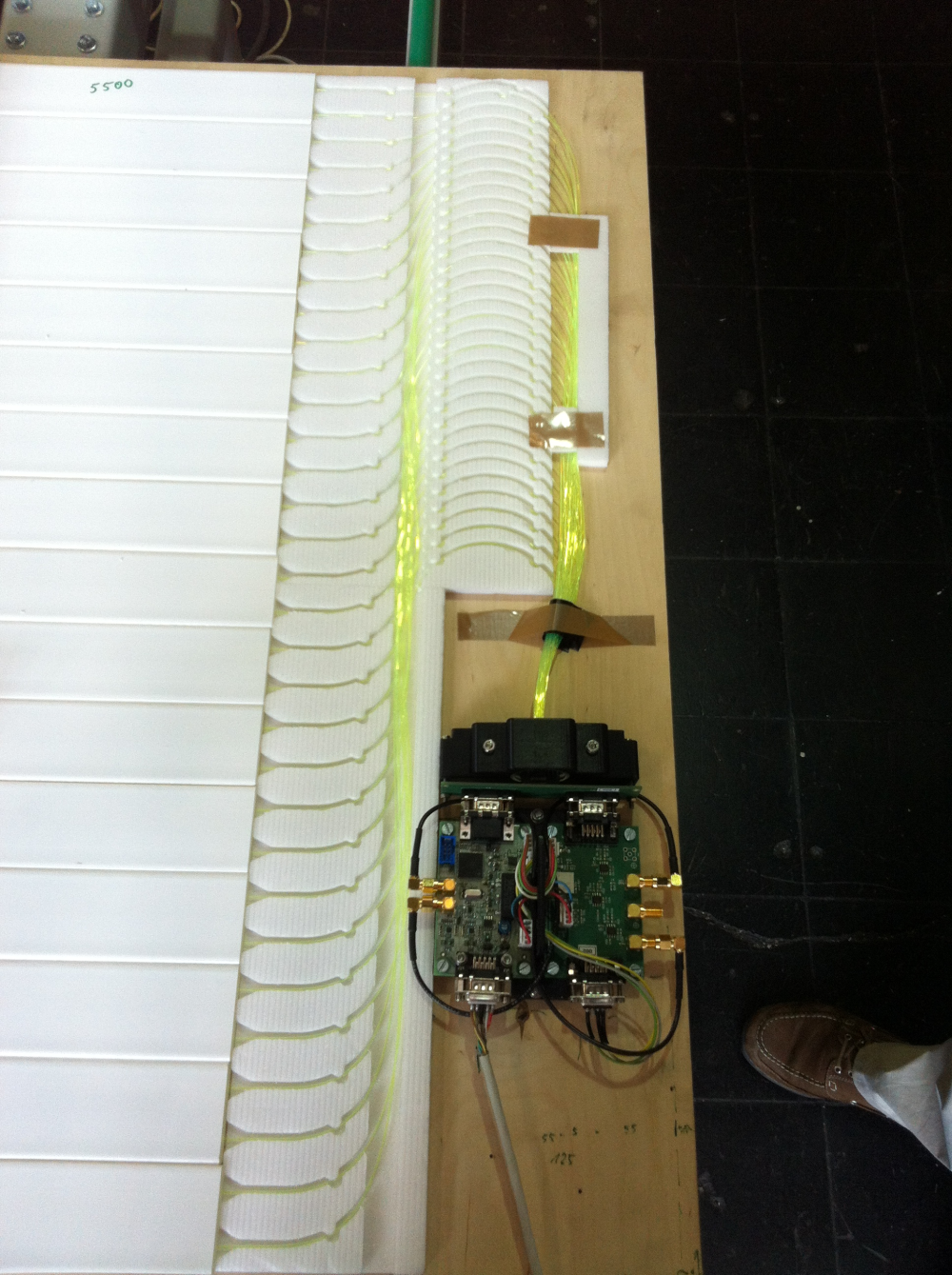

(Credits: B. Hoffmann)
(Credits: B. Hoffmann)
(Credits: B. Hoffmann)
In close cooperation between KIT and DESY the interface between the analog readout and the TAXI DAQ was developed. The SiPM is first connected to an analog readout module that comprises: a cookie board with analog temperature sensor that houses the SMD-soldered SiPM; an adapter board designed for mechanical stability that allows the SiPM on the cookie board to be attached to the ends of the optical fibers coming out of the scintillator bars; a readout board that houses the SiPM power supply (Hamamatsu C11204-02) and three different pre-amplifiers (1x, 5x, 10x); and finally, a general purpose board that contains line drivers to transmit the analog signal from the scintillator panel to the Scintillator Field Hub (SFH) subsystem that includes data handling, power, and timing distribution between the IceCube Laboratory and each scintillator station. The IceTAXI DAQ is an FPGA plus ARM embedded Linux system.
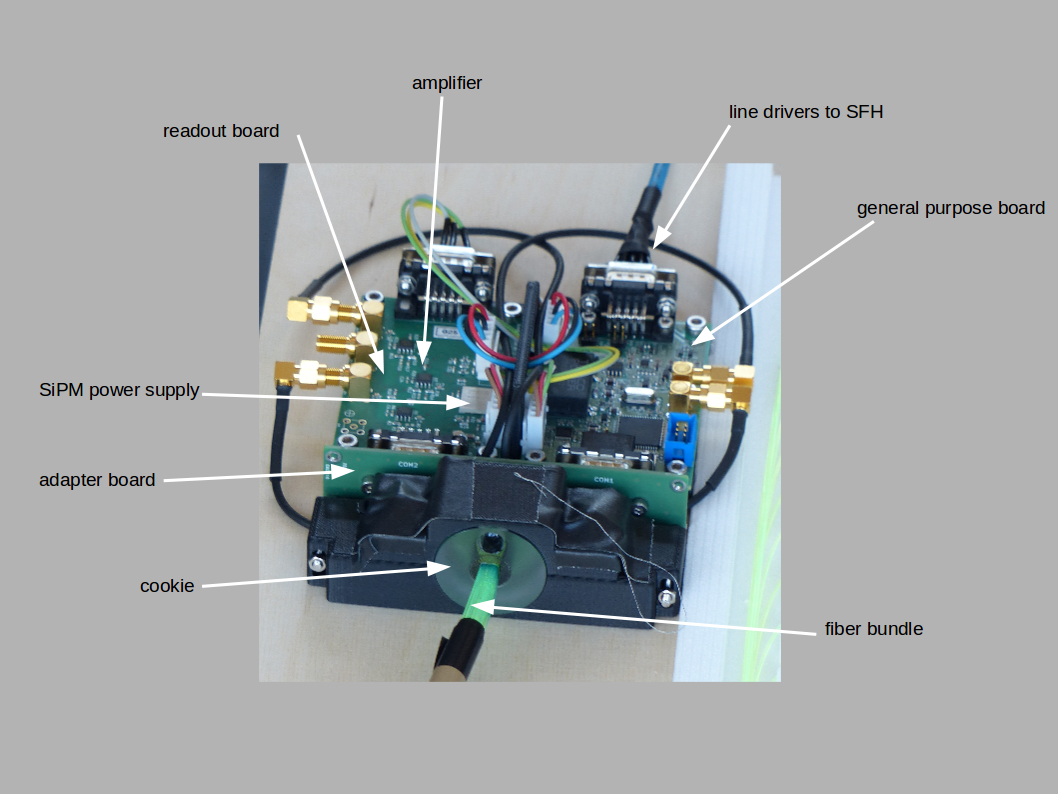
Layout of the analog readout module
(Credit: M. Oehler)
In the season 2017/18 one of these prototype stations was deployed at the South Pole by people from KIT, UW-Madison and DESY.
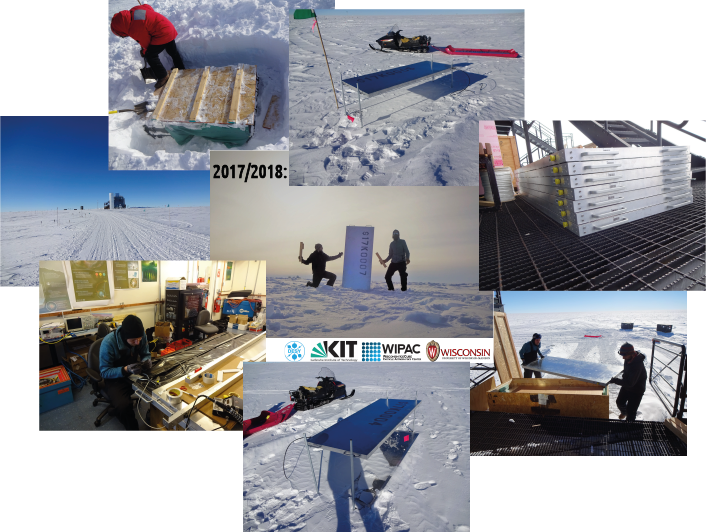
Impressions of detector deployment at the South Pole
(Credits: T. Huber)
The station comprises of seven scintillation detectors communicating with the SFH, where the TAXI DAQ is located. The alignment of the station is an array in hexagonal shape and approx. 60m side length, with the field hub in the middle. In January 2018 the station was deployed and first measurements were done that are very promising.
The next steps are to calibrate the detector station, creating an analysis framework, establishing a data stream with higher bandwidth and analyse the measured air shower events of the station showcasing technological advances for the next generation in cosmic-ray detection.
Further information Part I:
- Paper on The IceTop Scintillator Upgrade
- Paper with SPOCK description: